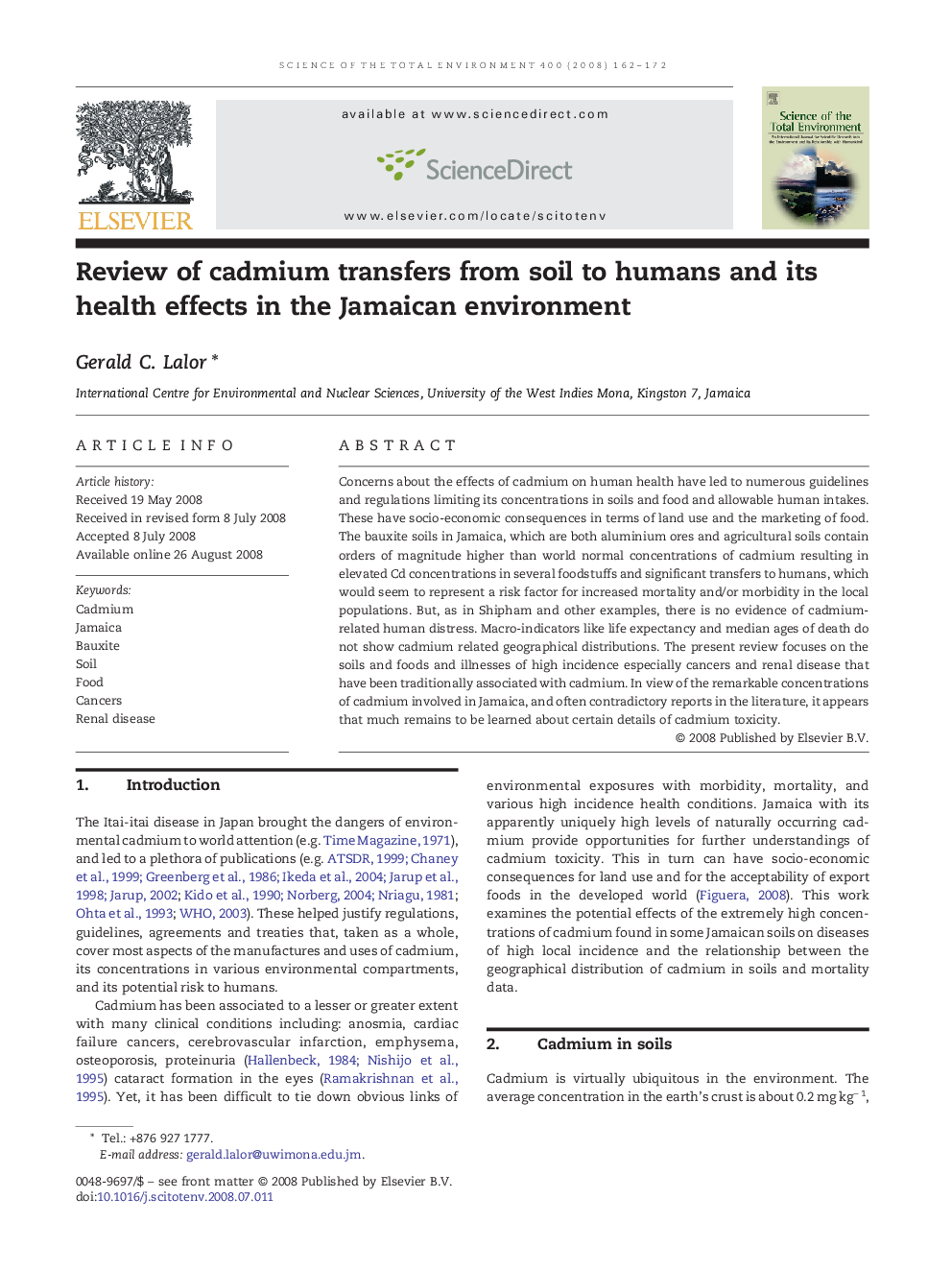| Article ID | Journal | Published Year | Pages | File Type |
|---|---|---|---|---|
| 4432542 | Science of The Total Environment | 2008 | 11 Pages |
Concerns about the effects of cadmium on human health have led to numerous guidelines and regulations limiting its concentrations in soils and food and allowable human intakes. These have socio-economic consequences in terms of land use and the marketing of food. The bauxite soils in Jamaica, which are both aluminium ores and agricultural soils contain orders of magnitude higher than world normal concentrations of cadmium resulting in elevated Cd concentrations in several foodstuffs and significant transfers to humans, which would seem to represent a risk factor for increased mortality and/or morbidity in the local populations. But, as in Shipham and other examples, there is no evidence of cadmium-related human distress. Macro-indicators like life expectancy and median ages of death do not show cadmium related geographical distributions. The present review focuses on the soils and foods and illnesses of high incidence especially cancers and renal disease that have been traditionally associated with cadmium. In view of the remarkable concentrations of cadmium involved in Jamaica, and often contradictory reports in the literature, it appears that much remains to be learned about certain details of cadmium toxicity.
